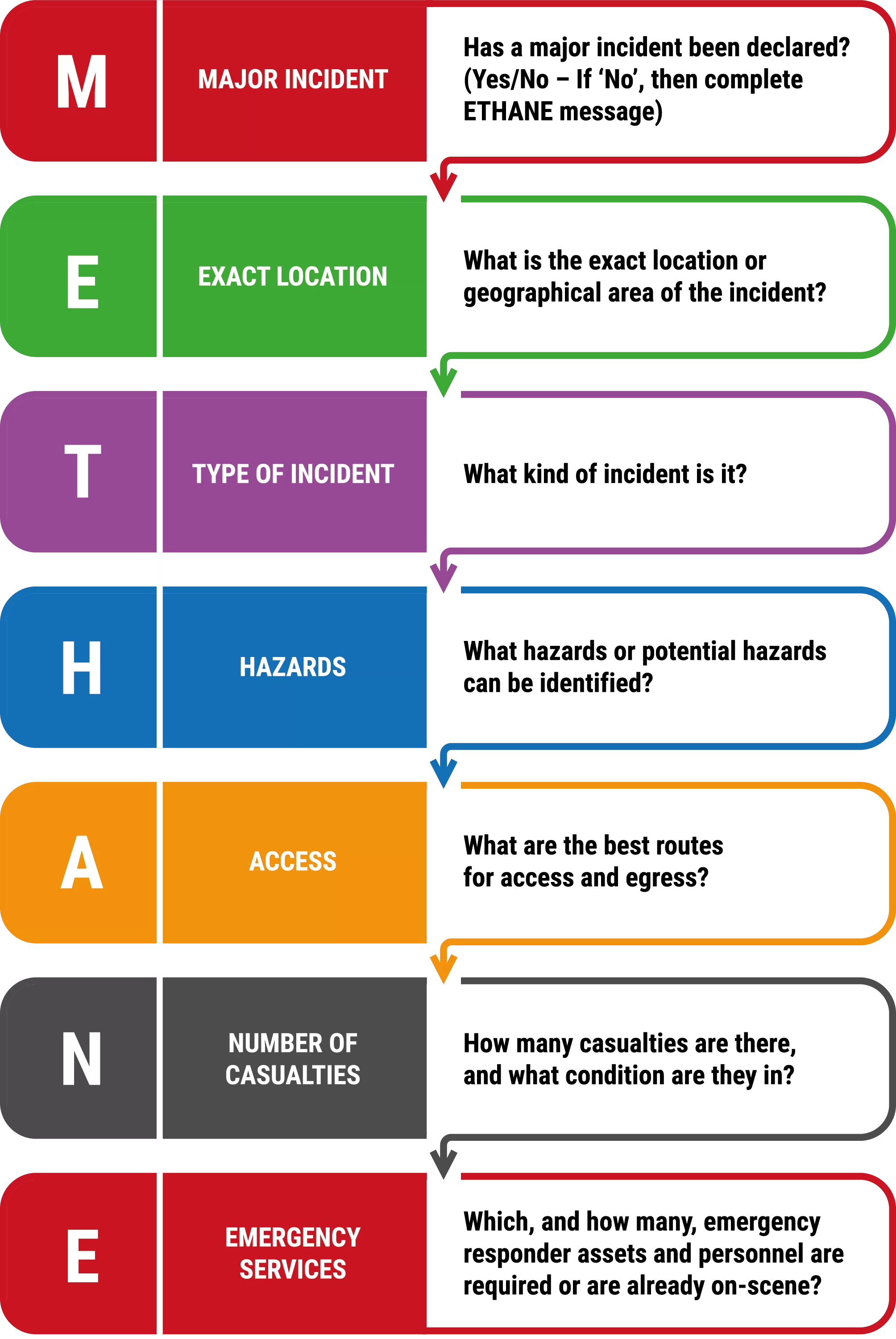Early stages of an incident & M/Ethane
4.0 Early Stages of an Incident
Recognising that an incident will involve working with other emergency services and/or other responder agencies is very important. The earlier other responder agencies are notified of the incident, the sooner joint working arrangements can be agreed and put into place.
For incidents with multiple sites, or an incident that initially appears to be a number of separate incidents, emergency service control rooms are best placed to recognise that a ‘multi-agency’ incident or ‘major incident’ may be in progress.
In other cases, first responders may recognise the nature of an incident and the need for a multi-agency response.
During the early stages of an incident it takes time for operational structures, resources and protocols to be put in place. This is likely to put initial responders and control rooms under considerable pressure. All the required information may not be available and commanders may have insufficient resources to deal with the incident.
In order to help all agencies gather initial information about an incident in a consistent manner, a common approach is recommended. The ‘METHANE’ model brings structure and clarity to the initial stages of managing any multi-agency or major incident.
A major incident is defined as [1]:
An event or situation with a range of serious consequences which requires special arrangements to be implemented by one or more emergency responder agency.
Declaring a ’major incident’ triggers a predetermined strategic and tactical response from each emergency service and other responder agencies. It takes time for operational structures, resources and protocols to be put in place. Declaring that a major incident is in progress as soon as possible means these arrangements can be put in place as quickly as possible.
5.0 M/ETHANE
The METHANE model is an established reporting framework which provides a common structure for responders and their control rooms to share major incident information. It is recommended that M/ETHANE be used for all incidents.
For incidents falling below the major incident threshold ‘METHANE’ becomes an ‘ETHANE’ message. During the decision making process using the joint decision model, there should be period consideration of the ‘M’ (representing ‘major incident’) by responders to establish whether a developing incident goes above the major incident threshold.
Each responder agency should send a M/ETHANE message to their control room as soon as possible. The first resources to arrive on scene should send the M/ETHANE message so that situational awareness can be established quickly. The information received through multiple M/ETHANE messages will gradually build to support shared situational awareness in those responding to the incident and between control rooms.
[1] See Cabinet Office Lexicon of civil protection terminology.

